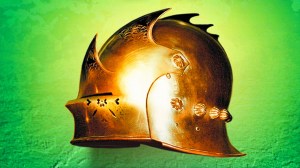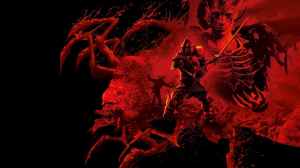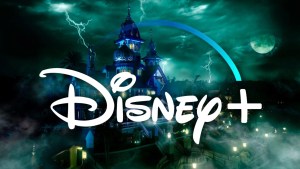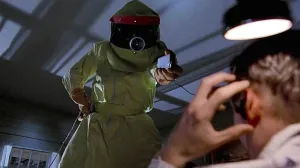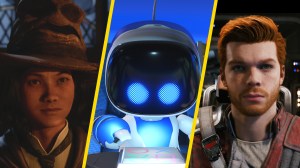What would heroes be without villains? Antagonists in movies have a unique ability to leave a lasting impression, often creating characters that are just as memorable as the heroes – and sometimes even more. Over the years, many have stood out not only for their evil deeds, but also for the complexity of their motivations, the depth of their arcs, and the cultural impact they’ve made. They frequently go beyond simply opposing the good guys and end up reflecting deeper human fears, desires, and flaws, resonating with audiences long after the story ends. That’s what makes a great villain timeless, powerful, and unforgettable.
Videos by ComicBook.com
From brilliant psychopaths to merciless tyrants and deeply disturbed minds, here are 10 of the greatest villains of all time.
1) Darth Vader

You can’t talk about villains without bringing up Darth Vader. Recognized across the globe (even by those who’ve never watched Star Wars), he’s unforgettable not just because of his chilling presence and incredible powers, but because of the emotional depth behind his story. Created by George Lucas, Vader made his first appearance in Star Wars: Episode IV – A New Hope and quickly became an icon. His black armor, mechanical breathing, and commanding voice became instant trademarks of the dark side.
But what truly sets him apart is the tragic fall of Anakin Skywalker, a gifted Jedi who turns into a servant of the Empire. That transformation, driven by fear, loss, and misguided decisions, adds a human layer to the villain – and it’s a big part of why people are drawn to him. When a villain carries that kind of emotional weight, it’s hard not to be intrigued. Darth Vader stands as a powerful symbol of corruption, redemption, and the inner conflicts that define human nature.
2) The Joker

Joker has been adapted so many times and in so many different ways that it’s almost impossible not to include him on this list. First introduced in 1940 by Jerry Robinson, Bill Finger, and Bob Kane, the character made his debut in DC Comics’ Batman #1 and has since become the Dark Knight’s most famous enemy. His impact is undeniable – his chaotic worldview and absurd philosophy have led audiences to reflect on deeper themes around madness and society, as if he were created specifically to challenge those very ideas.
And while he’s certainly a pop culture icon, what truly makes him one of the greatest villains in cinema is that he embodies pure chaos. The Joker stands for anarchy, disorder, and the flaws of human nature. He isn’t driven by a clear goal or logical motive, which makes him especially dangerous – you never know what he’ll do next, and that unpredictability is exactly what keeps viewers hooked. Every time he’s brought to life on screen, audiences can’t look away, because with him, anything can happen.
3) Hannibal Lecter
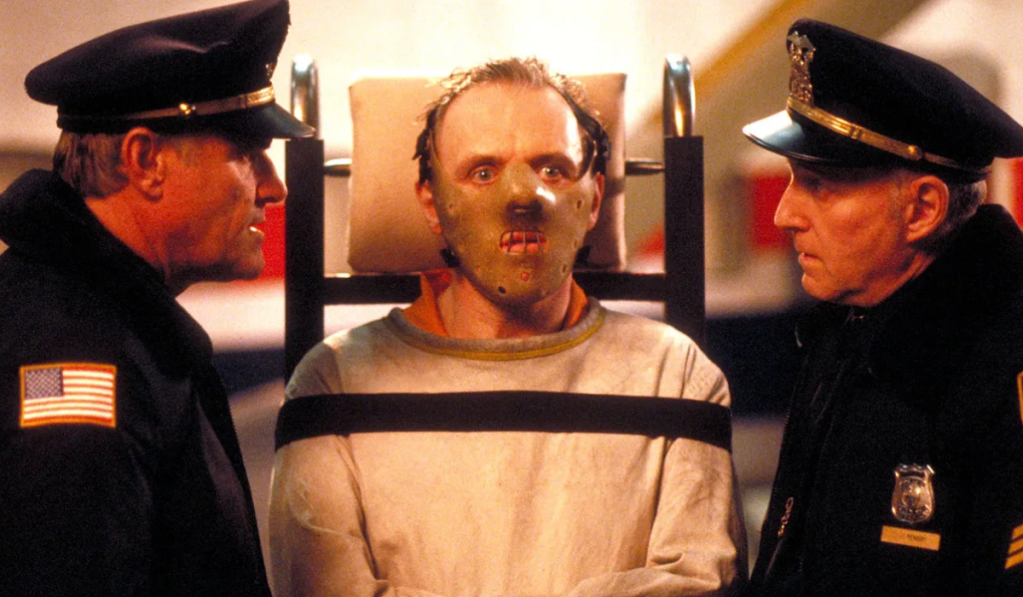
[RELATED: The 10 Best Movies to Earn a Billion Dollars at the Box Office]
Psychopathy and even cannibalism? Dr. Hannibal Lecter stands as one of the most chilling villains in film history. Created by author Thomas Harris, the character was immortalized on screen by Anthony Hopkins’ unforgettable performance in The Silence of the Lambs (though it was his second film appearance after Brian Cox in Manhunter). But what makes Lecter truly terrifying is the scope of his menace – he’s not just a killer, but a brilliant, cultured, and refined psychiatrist. His intelligence and sophistication, paired with his ability to manipulate and psychologically dominate others, make him as fascinating as he is horrifying.
While he may not have the flashy appeal of some other pop culture villains, Lecter leaves an undeniable mark thanks to his portrayal of cold, calculated evil. His presence brought a new layer of depth to the psychological horror genre, showing that true terror can wear a calm, polite face. To this day, his influence can still be felt in both the film industry and the larger universe of iconic villains – a reminder that intellect can be just as deadly as brute force.
4) Lord Voldemort

For a certain generation, Lord Voldemort represents the rise of extremist ideas that threaten freedom, since he believes in the superiority of pure-blood wizards and uses fear and violence to get rid of anyone he sees as inferior. Created by J.K. Rowling, he is the ultimate dark wizard and drives the entire narrative of the Harry Potter saga. In other words, it’s hard to imagine this world-famous, record-breaking franchise without him. Much like Darth Vader, few people are unfamiliar with Voldemort. His relentless pursuit of absolute power and his persecution of those he deems “inferior” reflect some of humanity’s darkest issues.
Voldemort isn’t just a villain – he represents a universal danger to the ideals of freedom, equality, and love. His character transcends the role of antagonist, becoming a symbol of everything society must stand against. In this way, his presence in the Harry Potter series makes the story more than just a battle between good and evil – it’s a fight against the most dangerous beliefs a society can harbor.
5) T-1000

The T-800 is the true symbol of The Terminator, but when it comes to pure villainy, the T-1000 steals the show. For many, he stands as one of the most terrifying and innovative creations in cinema, especially within the sci-fi genre, making its emblematic debut in Terminator 2: Judgment Day. This killer android, composed of a “mimetic polyalloy” made of liquid metal, can shapeshift, regenerate, and imitate any person or object of similar size – and that’s already frightening enough.
Unlike the T-800, which is all about brute force, the T-1000 is agile, silent, and incredibly lethal. Its attacks are executed with a surgical precision, making it all the more terrifying. Many consider it one of the greatest villains ever created, not just for its capabilities but because it symbolizes technological terror, embodying the very real dangers of artificial intelligence running unchecked. The T-1000’s creepy presence is basically a wake-up call about the scary things that could come from the rise of technology.
6) Norman Bates
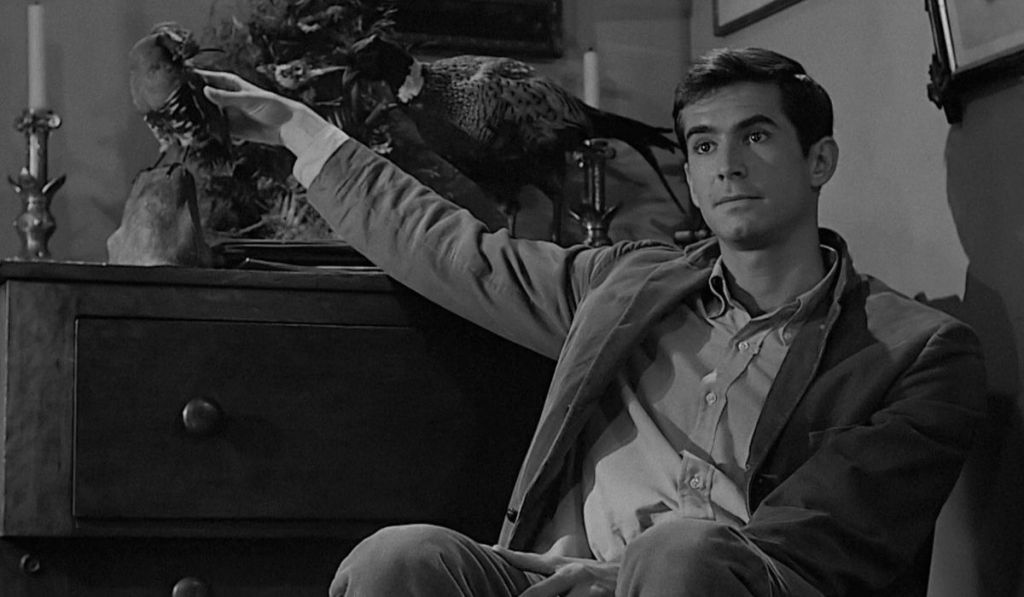
Here, the issue goes even deeper, as Norman Bates isn’t just a typical villain – he’s part of a cinematic classic, almost a pioneer in the history of film. The central character in Alfred Hitchcock’s Psycho, Bates initially comes across as a polite and friendly man. However, as the story unfolds, it’s revealed that he suffers from dissociative identity disorder, adopting the persona of his mother, in order to commit his murders. This psychological complexity adds a terrifying layer to his character, especially for audiences in the ’60s.
Norman Bates went on to inspire several sequels and prequels, all of which delved deeper into his troubled psyche. To this day, his story remains central to discussions about psychopathy and mental illness. And unlike many other villains who rely on explicit violence, he generates fear by tapping into the audience’s mind, creating unease in a more subtle, yet deeply disturbing way.
7) Thanos

Not just for comic and superhero fans, Thanos is truly the movie villain of the modern era, breaking away from the classic archetypes. What makes him so compelling is his warped belief about what’s best for humanity. The Mad Titan stands as one of the most powerful antagonists in the Marvel Cinematic Universe, and with Josh Brolin’s performance, he becomes the ultimate evil to be defeated in Avengers: Infinity War and Avengers: Endgame. His philosophy, though deeply macabre, is presented in a way that sparks real reflection on issues like morality, sacrifice, and the limits of power.
The phrase “Thanos was right,” used in memes by fans and in the MCU itself, is a testament to his deep influence within the genre and the wider cultural consciousness. He isn’t just a villain – he’s a mirror reflecting the ethical and existential dilemmas of human nature, pushing audiences to confront some of the darkest aspects of themselves. On top of that, his defeat at the hands of Tony Stark marks a defining moment in the MCU and the entire superhero movie genre, bringing closure to a narrative arc that spanned over a decade.
8) Freddy Krueger
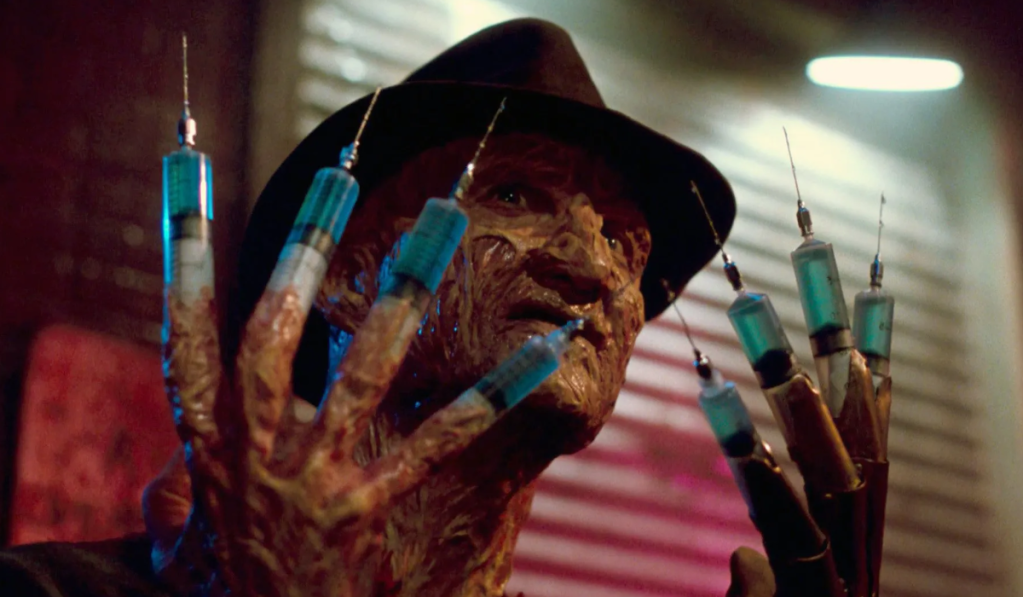
Who hasn’t heard of Freddy Krueger? Horror movies wouldn’t be the same without him. Created by Wes Craven, the villain who invades his victims’ dreams and kills them while they sleep first appeared in A Nightmare on Elm Street. Over the years, he has evolved into a brand and a pop culture symbol, appearing in countless media references and even in advertising campaigns. His deformed face, striped sweater, fedora, and glove with sharp blades on his fingers have become iconic and instantly recognizable.
Other than that, Freddy Krueger is one of the most enduring villains in film history, with a franchise that includes multiple sequels, a remake, and even a crossover with Jason Voorhees from Friday the 13th. He is synonymous with fear, but also with a perversely charismatic quality that makes him both chilling and fascinating. The antagonist simply reigns in terror, almost like a master setting the standard for future antagonists to follow. His twisted blend of dread and charm has cemented his place as one of the greatest villains to ever haunt the silver screen.
9) Hans Gruber

Hans Gruber may not be the most famous villain of all time, but when you look at cinema’s history, he certainly earns his place. Played to perfection by Alan Rickman in Die Hard, Gruber brings a level of elegance, strategic intelligence, and menacing charm that completely redefines the archetype of the action movie villain. Instead of relying on brute force, he introduces a rare sophistication to the genre.
His intricate plan to steal $640 million in financial papers, disguised as a terrorist act, showcases the kind of cunning and cold calculation that defines a truly memorable villain. This approach established a new benchmark for the genre, emphasizing the value of intelligence. And let’s not forget his death scene – it’s one of the most iconic moments in action movie history, leaving a lasting impression on fans for years to come. Hans Gruber is not just a villain; he’s a masterclass in how to elevate a character through complexity and charm.
10) Nurse Ratched

The embodiment of sadism, Nurse Ratched is the main antagonist in Ken Kesey’s One Flew Over the Cuckoo’s Nest and its 1975 film adaptation. As the head nurse of a psychiatric ward, she exerts absolute control over both the patients and the staff, using psychological manipulation, humiliation, and arbitrary punishments to maintain her authority. She became a striking symbol of institutionalized oppression, representing the oppressive power structures that strip individuals of their dignity and autonomy.
To truly grasp the extent of her power, Nurse Ratched is often compared to George Orwell’s “Big Brother,” embodying authoritarian control that dehumanizes. Her character is impossible to ignore in any discussion about the greatest cinematic antagonists. Even beyond the work she originates from, Nurse Ratched has left a lasting mark, often referenced in academic studies. And despite attempts to humanize her, she remains a symbol of tyranny and cruelty – the perfect villain who represents just how messed up institutional power can be.


